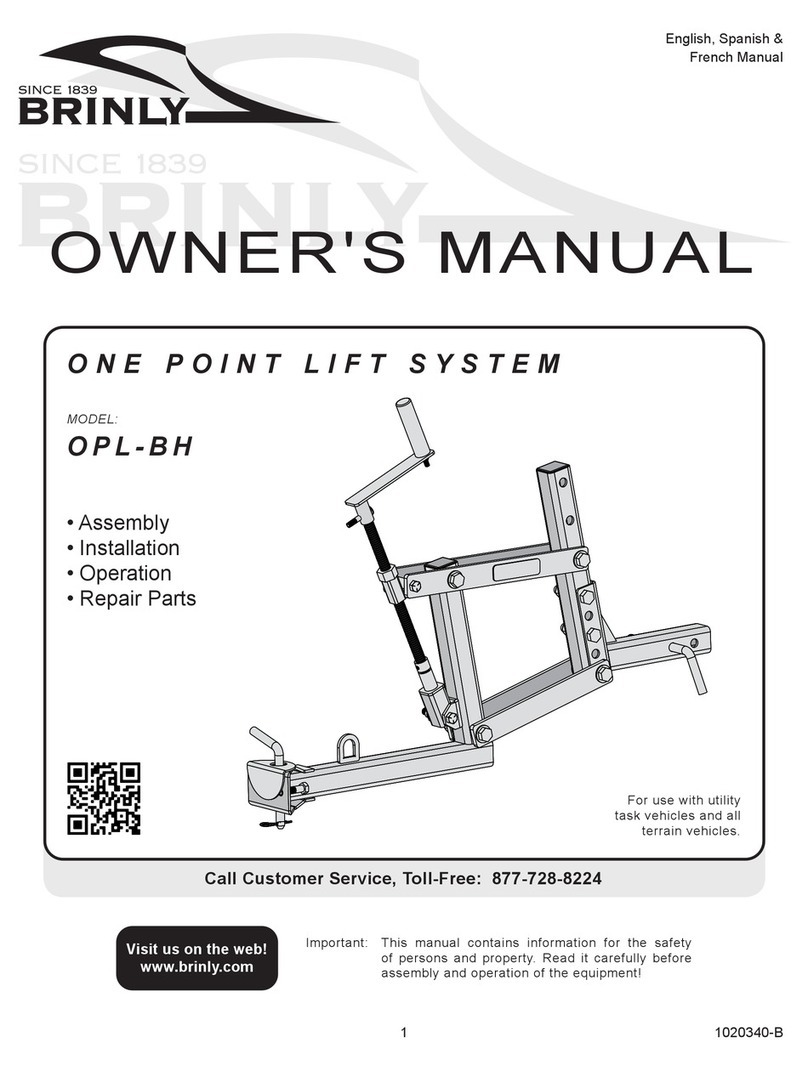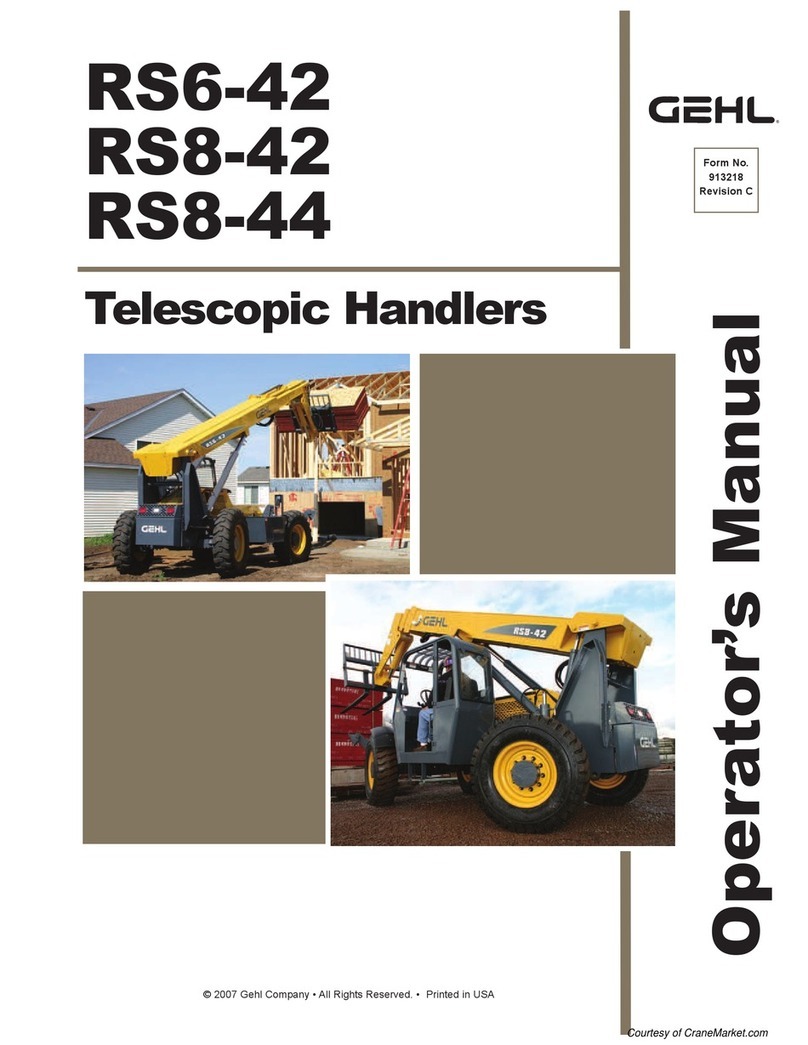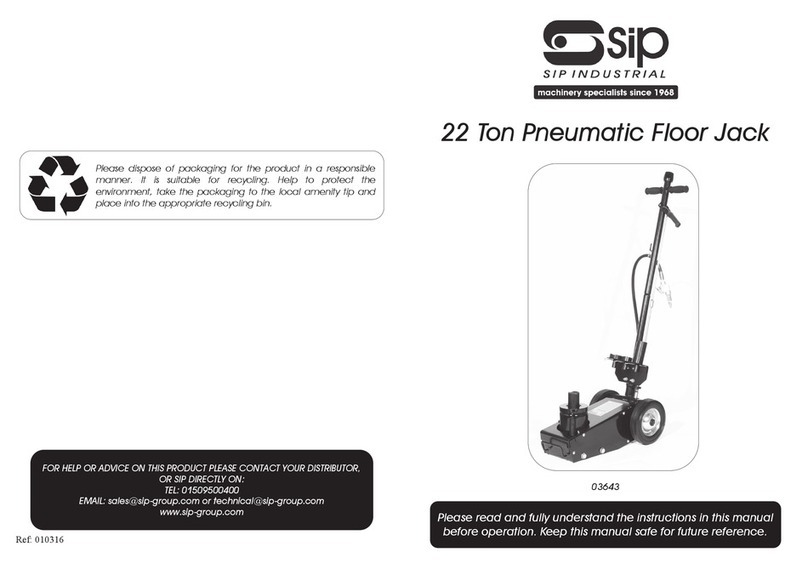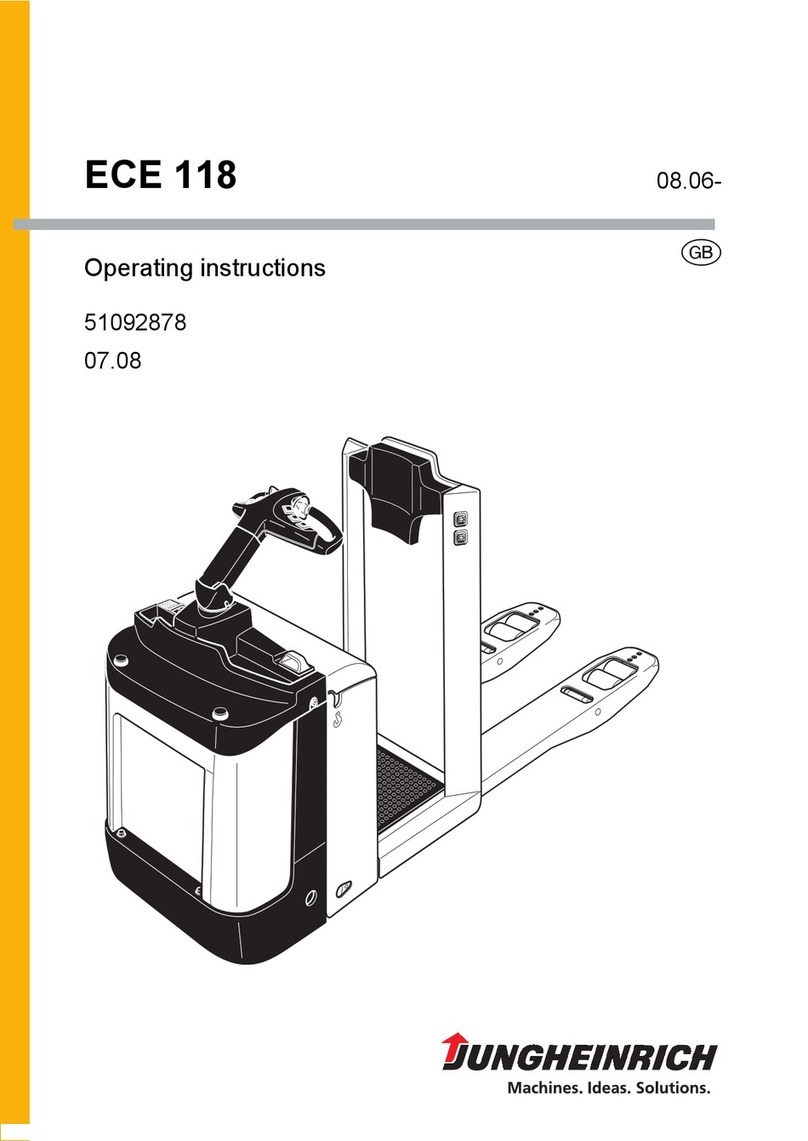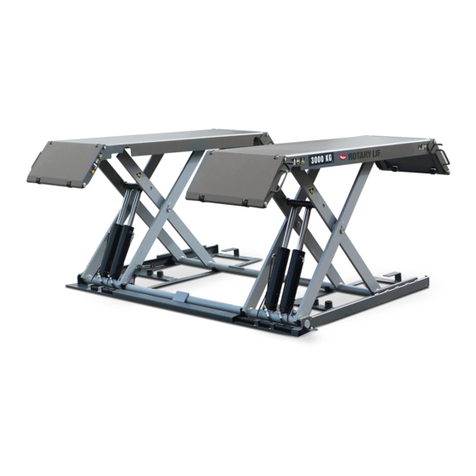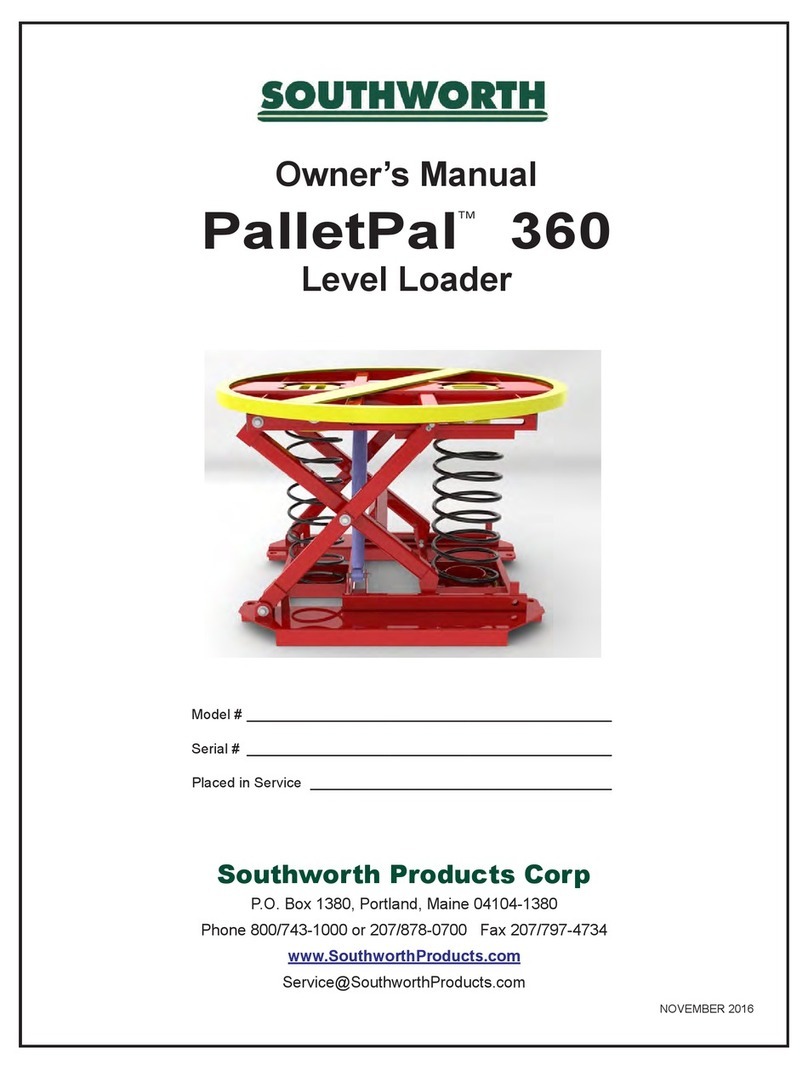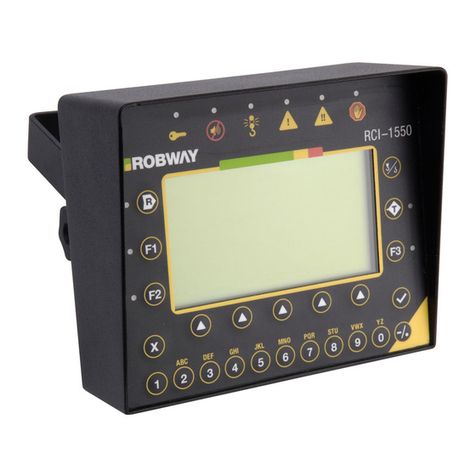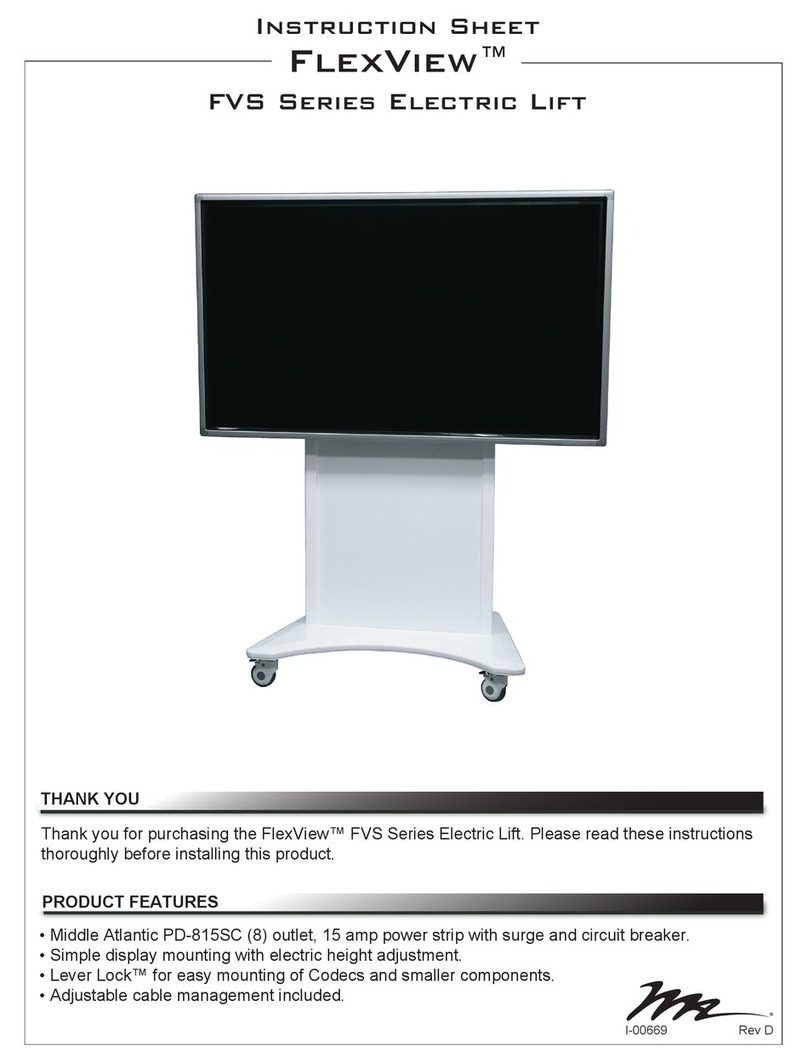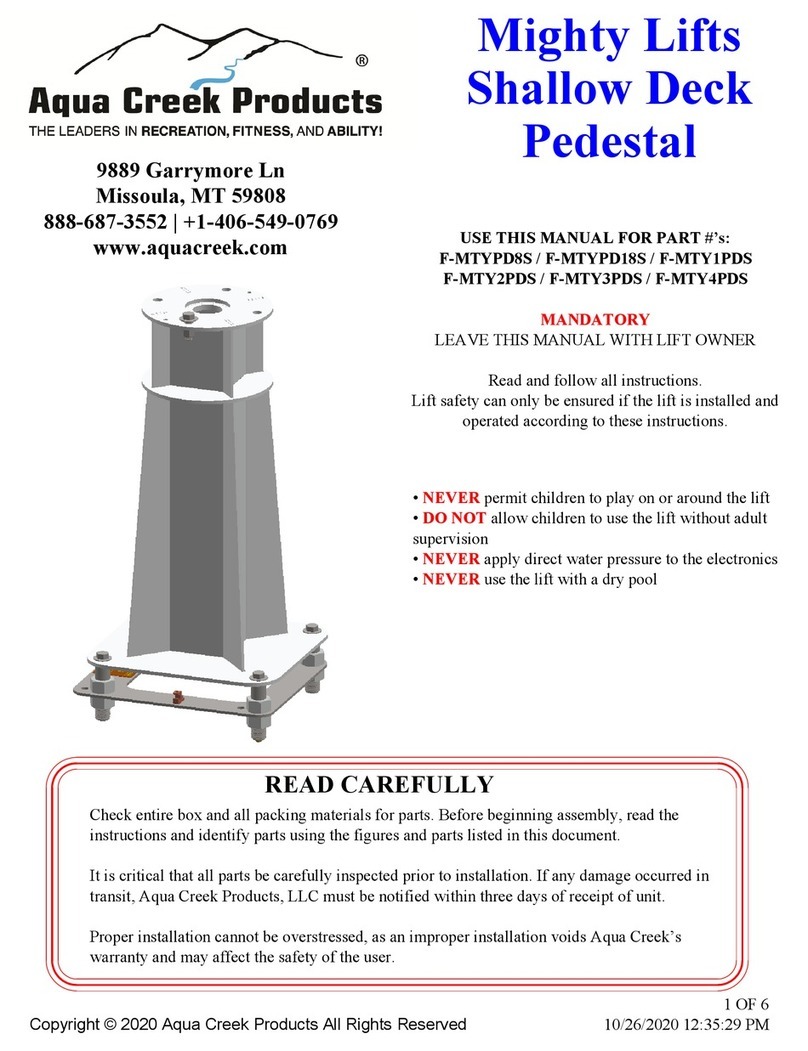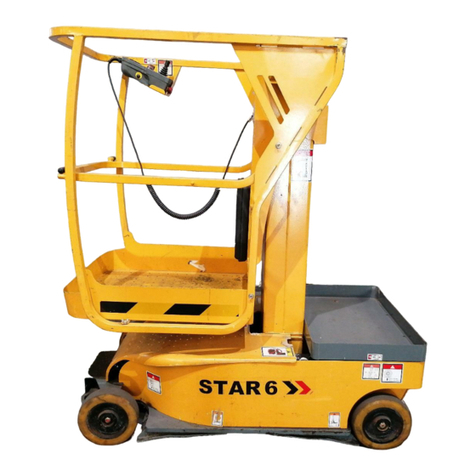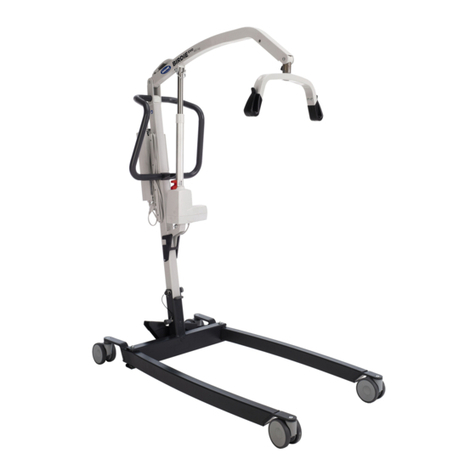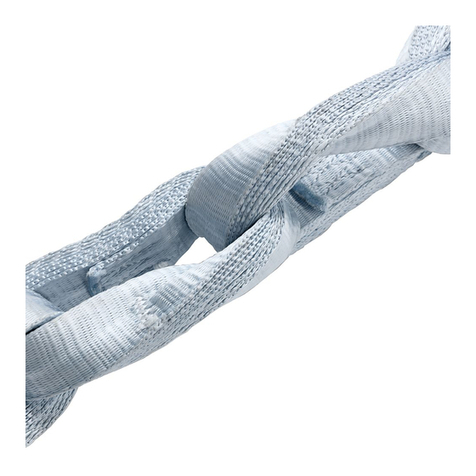BHW WHP08 Installation and operation manual

BHW DELTAFOR CABLE
LIFTING & PULLING MACHINES
Models: WHP08 (Part No. 3302), WHP16 (Part No. 3303), WHP32 (Part No. 3304), WHP54 (Part No.3305)
OPERATING & MAINTENANCE
INSTRUCTIONS
Manual Part No. 12664 / 14.10.14

2
CONTENTS
INTRODUCTION 3
IMPORTANT INFORMATION FOR DELTAFOR USERS 3
DELTAFOR INFORMATION
SPECIFICATIONS 4
CAPACITIES & MEASUREMENTS 4
MACHINE LABELS 5
USES FOR A DELTAFOR MACHINE 6
SAFETY PRECAUTIONS 7-8
OPERATING A DELTAFOR MACHINE
MACHINE COMPONENTS 8
WIRE ROPE INSTALLATION 9-10
PREPARING TO USE THE MACHINE 11
RIGGING UP & ANCHORING 12
RIGGING ARRANGEMENTS 13
OVERLOAD PROTECTION 14
DECOMMISSIONING THE MACHINE 15
ROPE STORAGE TIPS 15
MAINTENANCE
MONTHLY MAINTENANCE 15
ANNUAL MAINTENANCE 15
CARE OF THE WIRE ROPE 15
PARTS
NOTE: MODEL PARTS ARE DIFFERENT FOR EACH WINCH
MAKE SURE THE CORRECT WINCH MODEL IS SPECIFIED WHEN RE-ORDERING
WHP08 PARTS DIAGRAM & PART NUMBERS 16
WHP16 PARTS DIAGRAM & PART NUMBERS 17
WHP32 PARTS DIAGRAM & PART NUMBERS 18
WHP54 PARTS DIAGRAM & PART NUMBERS 19
WARRANTY 20

3
INTRODUCTION
PLEASE READ THIS MANUAL CAREFULLY BEFORE SET UP OR OPERATION OF THE MACHINE
Those responsible for the installation and the operation of this machine must read and understand this manual.
The first section deals with the installation requirements and the second section provides information to ensure
safe use of the machine.
The Deltafor™ range is of the highest quality and has been designed to give a robust and efficient service for
many years if care and attention are given at all times to correct installation, operation and maintenance.
IMPORTANT INFORMATION FOR DELTAFOR USERS
This operating and maintenance manual must be made available to any user of this equipment and
further copies are available on request. Only operators who have been trained to operate the
machine in a safe and proper manner should be allowed to use the DELTAFOR.
Safe and correct use of the DELTAFOR can only be achieved after this manual has been read
and fully understood and the instructions are carefully followed by the user.
Only a machine in good working order can be used and in particular the following should be checked every time it
is used:
Only wire rope of the correct diameter and construction can be used.( See Page 4). The rope should be
inspected to ensure it is serviceable (See ‘Care of the Wire Rope’ – Page 15).
Slings, chains or any other securing device applied to the anchor point is subjected to the full load applied
and should be at least capable of dealing with the machine’s rated load capacity. This equipment should
be regularly inspected. If any cuts, breaks or damage are evident it must be replaced before use.
Do not overload the machine and only use the handle provided, fully extended. Nothing must be added to extend
its length.
Ensure the wire rope and machine are kept clean.
Deltafor machines must not be used for lifting personnel.
PLEASE KEEP THIS MANUAL WITH THE MACHINE.

4
MACHINE INFORMATION
SPECIFICATIONS
Models Deltafor Cable Lifting & Pulling Machines
WHP08 / WHP16 / WHP32 / WHP54
Compliant with Machinery Directive 2006/42/EC
Construction & Operation Lightweight aluminium alloy casing provides ease of handling and a high
level of corrosion resistance. The flat base of the housing provides
additional stability in pulling applications.
Wire Rope is fed through two sets of wear resistant interlocking jaws to
provide parallel clamping system with large surface area to minimise
wire rope wear.
Built in shearing pin in PULLING IN lever for overload protection.
Anchor pin and spare shear pins (x 2) supplied at point of purchase.
The two spare pins are enclosed in the yellow carry handle.
Telescopic Operating Handle For use on either IN or OUT manual operating levers
Free Rope Run Hand operated manual Rope Release lever (see Pages 11-12)
Lubrication Lightweight oil for regular maintenance
Calcium based grease for annual maintenance.
DO NOT oil or grease wire rope. Use a suitable aerosol rope dressing.
CAPACITIES & MEASUREMENTS WHP08 WHP16 WHP32 WHP54
Maximum Working Loads 800kg 1600kg 3200kg 5400kg
Pulling distance: Rope moves per stroke 60mm 69mm 40mm 30mm
Operational Manual Effort (at rated load) 29kg 42kg 45kg 76kg
Anchor Pin Diameters 22mm 25mm 30mm 40mm
Wire Rope with Safety Hook 1960 N/mm2Grade 6/36 construction with wire core.
20m length supplied as standard (any length can be used)
Diameter 8.3mm 11mm 16mm 20mm
Breaking strain 44.7kN 84.4kN 179kN 275mm
Net Weights (Winch only) 6kg 13kg 22kg 58kg
Wire Rope and Reel 7.5kg 16kg 25kg 38kg
Size (L x W x H) mm 428 x 65 x 230 545 x 97 x 260 660 x 116 x 320 940 x 180 x 380
Typical Applications
Deltafor is a range of lifting and pulling machines for use with wire ropes of unlimited length. They can be used for pulling
and positioning heavy and large awkward loads, positioning structural steelwork, general public works, heavy mechanical
and electrical engineering. Other uses include agricultural, forestry and the fire and rescue services.
Also widely used for tensioning wire fences, garden landscaping and maintenance - and general construction of all kinds.
Useable at horizontal, vertical and angled working positions.

5
WINCH INFORMATION
DELTAFOR LABELS

6
USES FOR A DELTAFOR MACHINE
Deltafor machines provide the user with enormous pulling or lifting capacity from a portable, manually operated
machine and can be used for many different applications.
Operating the PULLING IN lever, the wire rope is pulled through the machine to lift or pull a load - or apply tension.
The use of the LETTING OUT handle allows the wire rope to be let out under control to lower or release tension
(in pulling applications) on the load.
Some of the most common applications are for tensioning guy ropes on wind turbines, radio masts, flagpoles and
marquees.
Deltafor machines can also be used for tensioning wire fences, positioning heavy machinery and many common
applications in Civil Engineering.
Fire engines are also equipped with this type of machine where it is used for pulling or lowering - or as a ‘steady’
line.
A Deltafor is even lighter to transport thanks to the use of aluminium casings.
With additional attachments such as fixed or movable pulley blocks the direction of pull can be changed and
several machines can be used in parallel to enable applied forces to be multiplied.
The manual force applied through the telescopic operating lever is transferred into the wire rope by hardened jaws
that grip the wire rope in proportion to the force it is applying.
Deltafor machines must be suitably anchored via the anchor pin. Attachments such as straps, chains or shackles
should be attached to the anchor pin for this purpose and be of a suitable rated capacity to at least match that of
the machine and capable of safely handling the load to be moved.
The Deltafor range can be used with any length of wire rope so long as the diameter is the same as the
specification for the model in use (See Page 4).
A 20m wire rope is supplied as standard with a safety hook. The other end of the cable is fused and tapered.
Other wire rope lengths are available from BHW Group sales (+44 (0)1482 223 663).

7
SAFETY PRECAUTIONS
PLEASE READ THIS CAREFULLY BEFORE RIGGING OR OPERATING THE MACHINE
The Deltafor is of the highest quality and has been designed to provide a robust and efficient service for many
years if care and attention are given at all times to correct, safe operation and maintenance.
Respect for the Deltafor pulling and lifting machine – and common sense in its operation, will ensure complete
safety and reliability.
BEFORE USE
•Make sure all pins and locks are secured.
•Place the telescopic operating handle on the IN and Out levers to ensure they move freely
and are functioning correctly.
•Make sure the rope release lever is in ‘engaged’ mode is fully flat towards the rope entry end.
•Inspect the rope for possible damage and ensure any mud or dirt are removed.
•Ensure the rope inlet and outlet are not obstructed.
•Check you have enough room around the machine to operate it efficiently.
•Position the anchor point to ensure the pull is as straight as possible.
Make sure it has enough capacity to withstand the force applied by the machine.
•Use a snatch block if necessary to turn corners and a snatch block can also be used to reduce
the load applied.
•The wire rope can travel above or below the anchor pin depending on the application,
and the anchor point to be used.
DURING USE
•Keep yourself and others at a safe distance and to the side of the wire rope when pulling under load.
•Never step over, stand near or guide the wire rope under tension.
•Always use heavy-duty gloves when handling the wire rope to protect against cuts or possible burns.
•Always wear suitable protective clothing and footwear.
•Never exceed the rated capacity.
•Operate from a side position and do not stand over the machine or the wire rope. See pictures below.
When using for securing trees to be felled, or similar applications, use one or more pulley blocks to ensure that the
direction of the fall is well away from the operator.
NOTE: If it is necessary to calculate the forces applied, always have these checked by a competent
engineer with particular reference to anchor points and fixture connections.
WRONG
CORRECT

8
SAFETY PRECAUTIONS Continued
TAKE CARE OF THE WIRE ROPE
•Check regularly for signs of wear in the form of broken stands or severe kinks along its length. If more
than 10 strands are broken in any 25mm of the ropes length it should be replaced.
•Never use as a towrope.
•If the Deltafor is working near its maximum capacity, drape a heavy blanket or similar over the rope
halfway a long its length. In the event of a miscalculation this will reduce the speed of a snapped rope.
•Do not allow the load to ‘snatch ‘ during a pull as this can momentarily double or even treble the load
applied.
•When attaching the hook to the load, always use a suitable load bearing sling, straps or chains with
adequate capacity to withstand the loads applied.
•Check that the hook is secure and the safety hook closed. Remember if the hook breaks away under
tension it will travel through the air at speed.
•Never wrap the rope around a load, or around an anchor point and reconnect the rope on to the hook.
•Ensure that when ‘letting out’, sufficient rope is available. If the end of the rope is allowed to pass into the
machine housing, the rope will be disconnected from the machine and the load will be released.
Colours of strops and straps are for illustrative purposes only
OPERATING A DELTAFOR MACHINE
MACHINE COMPONENTS
Familiarise yourself with the machine and all of its components.
Overload of the machine is protected by a shear pin installed in the PULLING IN lever. Spare shear pins are
located in the end of the carry handle. 2 spares are supplied at point of purchase.

9
WIRE ROPE INSTALLATION
Choose a level hard standing, clear of personnel, moving vehicles or machinery.
Unwind the new wire rope by rolling it out along the ground to prevent kinking.
Have the plain end of the rope nearest to you and the machine.
Continued ./.
Position the Deltafor body vertically with the
Rope Entry end at the top, and allow
PULLING IN and LETTING OUT levers to
drop to the floor.
Push the Rope Release lever down firmly until
it locks towards the Anchor Pin end. This
lever should then remain in this (disengaged)
position.
If the Rope Release lever is difficult to move
or will not lock in disengaged position, check
that the PULLING IN and LETTING OUT
levers are fully ‘down’ towards the Anchor Pin
end and push the Rope Release lever fully
down to lock.
Make sure that winch is on a stable footing
before inserting the rope.
With the Rope Release lever still in the
disengaged position, push the plain end of the
wire rope into the Rope Entry hole on the end
of the machine.
The wire rope should easily travel through the
housing and appear at the Anchor Pin end.
See next section on Anchor Pin removal.

10
WIRE ROPE INSTALLATION
ANCHOR PIN REMOVAL FOR EASY LOADING OF WIRE ROPE
Lay the machine down, turn and pull the anchor pin to release the double
lock.
There is also a facility on the Anchor Pin lock for an additional split pin or
pin retainer (not supplied) which you may have to remove if fitted.
Slide out the Anchor Pin to allow the wire rope free travel through the body
of the machine.
Push the rope fully through until it emerges from the Anchor Pin end,
Leave the Rope Release lever in the disengaged position until the machine is fully rigged for operation.
This will allow the wire rope to be pulled through the body of the machine without the clamps preventing travel.
Clamps can be activated and the wire rope secured with the instructions that follow
DOUBLE LOCK –
TURN & RELEASE

11
PREPARING TO USE THE MACHINE
Fully replace and double lock the Anchor Pin, attaching a suitable anchor sling, chain or shackle as required.
Replace split pin or retainer pin if fitted. The wire rope can travel above or below the anchor pin depending
on the particular application and the position of the anchor point to be used.
Attach the machine to a suitable anchor - the anchor point must be able to withstand the full capacity of
the load and also be suitable for the rated capacity of the machine (see note below).
NOTE ANY attachments or accessories must be able to withstand the full capacity of the machine
and the load. Slings, shackles, chains and straps with various load ratings are available from BHW Group
sales on (+44 (0)1482 223 663) or online from RED (Recovery Equipment Direct) at www.red-bhw.com.
When the machine is safely anchored, pull through all slack wire rope from the Rope Anchor end. To avoid any
trip hazard, place any surplus wire rope, as a coil, as far away from the operating area as the length of unused
wire rope will permit.
WITHOUT ANY LOAD ATTACHED
Fully engage the wire rope clamps by pushing the Rope Release lever firmly down to the housing and towards
the Rope Entry point. As the Rope Release lever may be stiff and move suddenly down to the clamp position
under hand pressure, care should be taken to avoid trapped fingers or hands. The clamps should now engage
around the wire rope.
Attach the Telescopic Operating Handle to the
PULLING IN lever, by sleeving on to the lever over the static
locking button and turning the handle to lock in place. (The
inside of the Telescopic Operating Lever has a grooved
channel to slide over the locking button).
Extend the Telescopic Operating Handle by pressing down
the spring button (half way up the handle) and fully extend the
Telescopic Operating Handle, making sure that the spring lock
button is fully engaged in the extended position.
DO NOT add anything to lengthen the handle.
Check clamps are capable of engaging the wire rope by test cranking the PULLING IN lever. The rope should
easily move through the Rope Entry point and out past the Anchor Pin.
By removing the Telescopic Operating Handle and locking it on to the LETTING OUT lever in the same way as
detailed above for PULLING IN, check that the wire rope will easily let out before fully implementing any pulling or
lifting task in hand.
If the wire rope is not fully engaged with the clamps, repeat the preparation process by removing the Telescopic
Operating Handle and disengaging the Rope Release lever as described in previous section.
It is important that the Deltafor is safe and fully operational before use.

12
OPERATING INSTRUCTIONS
SETTING UP THE DELTAFOR FOR USE
The rigging method chosen will depend on the application and typical examples are shown below.
ANCHORING A DELTAFOR
It is essential that the machine anchorage is able to withstand the forces applied in use.
The Deltafor should be anchored to a fixed point where possible, using an appropriately rated sling, chain
or shackle that will easily take the force of the load attached during operation.
.
Suspended anchor points allow the Deltafor to be connected either by the anchor pin or by the wire rope hook.
Again all connections and fixtures must be able to take at least the force of the load during operation.
Never use the wire rope linked back round to itself to connect to an anchor point.
When felling trees or similar applications, use one or more pulley blocks to ensure that the direction of the fall is
well away from the operator.
NOTE: If it is necessary to calculate the forces applied, always have these checked by a competent
engineer with particular reference to anchor points and fixture connections.

13
RIGGING ARRANGEMENTS
Using single or multiple pulley blocks can significantly increase the force applied by the machine.
Examples for pulling and lifting are shown below. Some loss of force applied will occur due to inefficiencies in the
blocks. This would typically be 10% for each return of the wire rope.
Pulley block wheels should have a diameter of around 18 times the diameter of the wire rope to prevent damage to
the rope.
Anchor points, straps, chains, shackles or any other accessory used to either anchor the machine or
connect to the load must have a rated load capacity AT LEAST equal to the total load weight to be moved.
Always ensure that there is enough rope length to prevent the rope from detaching itself from the machine when
letting out.
MACHINE OPERATION
As with all machinery, you are advised to carry out a risk and surrounding environment assessment before
commencing any pulling or lifting operation.
Sleeve and lock the Telescopic Operating Handle on to the PULLING IN or LETTING OUT levers as required,
checking that it is fully locked on to the selected lever. The handle has a grooved channel inside the tube that
locates on to the static pin on the lever. A simple twist locks the handle on.
Observing all necessary safety procedures, crank the selected PULLING IN or LETTING OUT lever according to
the application.
When letting out, ensure plain rope end (non hook) does not enter housing, if this is allowed to happen the load
will be released and the rope will be pulled from the machine.
Always operate winch with the handle fully extended. Do not add anything to the handle that will make it longer.
Excessive leverage will alter the performance of the Deltafor and result in possible injury or damage.
NEVER OPERATE ROPE RELEASE LEVER WITH A LOAD ATTACHED TO THE ROPE.
Under no circumstances wrap the wire rope around the load and then attach the hook back on to the rope. Use
straps or slings of a suitable breaking strain from the hook to the load and ensure that the safety hook catch is fully
closed.

14
OVERLOAD PROTECTION
In the event of the load rating of the machine being exceeded,
the shearing pin on the PULLING IN lever will snap to prevent
overload. If this happens, stabilise and isolate the load so there
is no load bearing on the machine.
Decommission the machine by carefully releasing the rope by
operating LETTING OUT lever (NOT the Rope Release). The
machine must be freed from the load.
Knock out pin shards and replace the shearing pin in the
PULLING IN lever. Two spares are located in the yellow carry
handle when the Deltafor is first purchased.
Review the operation and reduce the load (e.g. fit a pulley
block). Check that PULLING IN and LETTING OUT levers are
both operational and clamps are still engaged. You can now
recommence operation.
IMPORTANT: Shearing pins are calibrated for each particular
Deltafor model. Do not use any other substitutes or temporary
replacements as they are an important safety factor when
operating the machine. Misuse could cause possible personal
injury, damage to the machine or the item being moved - it may
also invalidate the warranty.
Should you need replacement shearing pins, use only those
recommended by the BHW Group deemed as specific for
Deltafor lifting and pulling machines.
Call BHW Group sales on +44 (0)1482 223 663 and quote the
relevant part number which can be found at the back of this manual – it is IMPORTANT that you specify the
correct model version for the shearing pin as they are specifically calibrated for the rated loads for each of the
three models currently available.
DECOMMISSIONING THE DELTAFOR
When you have finished the lifting or pulling operation:
Leave the machine anchored.
Ensure there is no tension on wire rope and load is disconnected.
Remove Telescopic Operating Handle, collapse to portable height and ensure spring pin is locked to prevent
handle extending in transit.
With the PULLING IN and LETTING OUT levers fully down towards the Anchor Pin end, disengage the Rope
Release lever by pushing towards the Anchor Pin end.
The Rope Release lever should lock into that position. If the Rope Release lever is difficult to move or will not lock
in position, check that both PULLING IN and LETTING OUT levers are fully ‘down’ towards the Anchor Pin end
and try again with Rope Release lever. It should now lock and release the internal rope clamps.
With the clamps released, pull the wire rope out from the Rope Entry end of the machine (Opposite end to Anchor
Pin).
Remove machine from anchorage point, double lock anchor pin back into machine housing, replace retainer pin if
fitted. Stow straps, shackles or chains used. Clean the machine and the wire rope.

15
ROPE STORAGE TIP
To stow the wire rope, first totally uncoil it and lay it out straight. Clean, removing any excess dirt or mud.
If wire rope is wet, dry off before storage and spray with a suitable wire rope dressing – this will improve
the longevity and condition of the wire rope. Do not use oil or grease on the wire rope, a proprietary wire rope
lubricant is available from BHW Group sales.
From the plain (non hook) end, form a coil which seems a natural size without stressing or kinking
the wire rope and tie off the first coil. Collect the wire rope, by rolling the coil along the ground.
Secure with suitable cable ties in at least four places around the coil.
Where a stowage spool is supplied, insert coil into the spool and secure.
Once wire rope is coiled, tie off the safety hook on to the coil itself.
MAINTENANCE
REGULAR MONTHLY MAINTENANCE
Wash the housing and handles with fresh water and dry.
The machine should be kept clean in order to prevent any build up of material on external working parts.
Check your Deltafor for any external damage.
Check anchor pin is clean and capable of double locking into the housing.
All external-moving parts should be lubricated with a lightweight oil.
Remove any dirt or debris from wire rope and apply a suitable aerosol dressing to protect.
REGULAR YEARLY MAINTENANCE
Disassemble, clean and lubricate with calcium base grease.
Check all parts and accessories for any wear or damage. Replace as necessary.
CARE OF THE WIRE ROPE
NOTE: ISO 4309:2004/2010 – WIRE ROPES DIRECTIVE
ISO 4309:2004 / 2010 details guidelines for the care, installation, maintenance and examination of wire rope in
service on winches, hoists and cranes, and enumerates the discard criteria to be applied to promote the safe use
of the machinery. It is important that these guidelines for safe care, installation and ultimately disposal of wire
ropes is strictly adhered to according to this directive.
It is most important that the wire rope is inspected on a regular basis, for kinks, flat spots, broken strands and
other damage, and if necessary the damaged sections should be cut away and the rope re-attached or completely
replaced.
Check both the rope and the hook and replace under any of the following circumstances:
•10 strands of rope or more broken within a space of 25mm or more (Fig. 1).
•Rope shows visible signs of wasting (Fig. 2).
•Deformed or excessively corroded rope.
•Twisted rope.
•Bent rope.
•Faulty or damaged hook or safety catch.
•The wire rope is 10% less than original diameter as specified, due to stretch during use.
Wire ropes and safety hooks must be replaced if damaged or worn.
WIRE ROPES ARE NOT COVERED BY WARRANTY.
SPARES
If it becomes necessary to obtain replacement parts, refer to parts diagrams and lists shown in the back of this
manual. Ensure that you refer to the correct model, as parts are different for each Deltafor model.
Please contact BHW Group sales on +44 (0)1482 223 663, quoting serial number of the machine if possible and
model number. BHW Group Limited reserve the right to change specifications without notice.

16
PARTS – WHP08
Please ensure you use the correct model reference, as parts and numbers are different for each winch.
Ref. No. Item Number Description Quantity
1 12570 Left Side Plate 1
2 12574 Right Side Plate 1
3 n/a Handle 0
4 n/a Rivet M8 0
5 3373 Washer Plain M6 6
6 3374 Washer Spring M6 6
7 2060 Bolt Cap Head M6 x 40mm 6
8 12583 Nut Square M6 6
9 12585 Front Jaw Block 1
10 12589 Back Jaw Block 1
11 12593 Relaxed Connecting Rod Axle 1
12 12597 Forward Handle 1
13 12601 Relaxed Handle 1
14 12605 Fixed Axle 1
15 12609 Shear Pin 1
16 12612 Upper Grip Jaw 1
17 12619 Connecting Rod 1
18 12623 2n
d
Pin 1
19 12627 3r
d
Pin 1
20 12631 4
th
Pin 1
21 12635 ‘C’ Clip M6 2
22 12635 ‘C’ Clip M6 2
23 12637 Shackle Rod 1
24 n/a 5
th
Pin 0
25 n/a Connecting Rod 0
26 12645 Crank Axle 2
27 n/a Stay Pin 0
28 12651 Guide Tube For Wire rope 1
29 12355 Tube Handle 1
N/S 2330 8.3mm dia. x 20m Wire Rope & Safety Hook
(For longer lengths, please call BHW Sales)

17
PARTS – WHP16
Please ensure you use the correct model reference, as parts and numbers are different for each winch.
Ref. No. Item Number Description Quantity
1 12571 Left Side Plate 1
2 12575 Right Side Plate 1
3 12578 Handle 1
4 12579 Rivet M8 4
5 3373 Washer Plain M6 6
6 3374 Washer Spring M6 6
7 2063 Bolt Cap Head M6 x 55mm 6
8 12583 Nut Square M6 6
9 12586 Front Jaw Block 1
10 12590 Back Jaw Block 1
11 12594 Relaxed Connecting Rod Axle 1
12 12598 Forward Handle 1
13 12602 Relaxed Handle 1
14 12606 Fixed Axle 1
15 12610 Shear Pin 1
16 12613 Upper Grip Jaw 1
17 12620 Connecting Rod 1
18 12624 2n
d
Pin 1
19 12628 3r
d
Pin 1
20 12632 4
th
Pin 1
21 12636 ‘C’ Clip M8 2
22 12636 ‘C’ Clip M8 2
23 12638 Shackle Rod 1
24 n/a 5
th
Pin 0
25 n/a Connecting Rod 0
26 12646 Crank Axle 2
27 n/a Stay Pin 0
28 12652 Guide Tube For Wire rope 1
29 12356 Tube Handle 1
N/S 2328 11mm dia. x 20m Wire Rope & Safety Hook
(For longer lengths, please call BHW Sales)

18
PARTS – WHP32
Please ensure you use the correct model reference, as parts and numbers are different for each winch.
Ref. No. Item Number Description Quantity
1 12572 Left Side Plate 1
2 12576 Right Side Plate 1
3 12578 Handle 1
4 12579 Rivet M8 4
5 3375 Washer Plain M8 7
6 3376 Washer Spring M8 7
7 12580 Bolt Cap Head M8 x 65mm 6
7a 12582 Bolt Cap Head M8 x 85mm 1
8 12584 Nut Square M8 7
9 12587 Front Jaw Block 1
10 12591 Back Jaw Block 1
11 12595 Relaxed Connecting Rod Axle 1
12 12599 Forward Handle 1
13 12603 Relaxed Handle 1
14 12607 Fixed Axle 1
15 12610 Shear Pin 1
16 12614 Upper Grip Jaw 1
17 12621 Connecting Rod 1
18 12625 2n
d
Pin 2
19 12629 3r
d
Pin 1
20 12633 4
th
Pin 1
21 12636 ‘C’ Clip M8 2
22 12636 ‘C’ Clip M8 2
23 12639 Shackle Rod 1
24 12641 5
th
Pin 2
25 12643 Connecting Rod 1
26 12647 Crank Axle 2
27 12649 Stay Pin 1
28 12653 Guide Tube For Wire rope 1
29 12356 Tube Handle 1
N/S 2329 16mm dia. x 20m Wire Rope with Safety Hook
(For longer lengths, please call BHW Sales)

19
PARTS – WHP54
Please ensure you use the correct model reference, as parts and numbers are different for each winch.
Number Item Number Description Qty
1 12573 Left Side Plate – WHP - 54 1
2 12577 Right Side Plate – WHP – 54 1
3 12578 Handle – WHP – 16, 32 & 54 1
4 12579 Rivet M8 – WHP – 16, 32 & 54 4
5 3375 Washer Plain M8 – WHP – 32 & 54 7
6 3376 Washer Spring M8 – WHP - 32 & 54 7
7 12581 Bolt Cap Head M8 x 75mm – WHP – 54 6
7a 12582 Bolt Cap Head M8 x 85mm – WHP – 32 & 54 1
8 12584 Nut Square M8 – WHP – 32 & 54 7
9 12588 Front Jaw Block – WHP – 54 1
10 12592 Back Jaw Block – WHP – 54 1
11 12596 Relaxed Connecting Rod Axle – WHP – 54 1
12 12600 Forward Handle – WHP – 54 1
13 12604 Relaxed Handle – WHP – 54 1
14 12608 Fixed Axle – WHP – 54 1
15 12611 Shear Pin – WHP – 54 1
16 12615 Upper Grip Jaw – WHP – 54 1
17 12622 Connecting Rod – WHP – 54 1
18 12626 2n
d
Pin – WHP – 54 2
19 12630 3r
d
Pin – WHP – 54 1
20 12634 4
th
Pin – WHP – 54 1
21 12636 ‘C’ Clip M8 – WHP – 16, 32 & 54 2
22 12636 ‘C’ Clip M8 – WHP – 16, 32 & 54 2
23 12640 Shackle Rod – WHP – 54 1
24 12642 5
th
Pin – WHP – 54 2
25 12644 Connecting Rod – WHP – 54 1
26 12648 Crank Axle – WHP – 54 2
27 12650 Stay Pin – WHP – 54 1
28 12354 Guide Tube For Wire rope – WHP – 54 1
29 12357 Tube Handle – WHP – 54 1
N/S 2329 20mm dia. x 20m Wire Rope with Safety Hook
(For longer lengths, please call BHW Sales)

20
WARRANTY
BHW GROUP LIMITED warrants each new Deltafor machine and ancillary equipment supplied as part
of the customer order against factory defects in materials and workmanship for one year from date of purchase.
The responsibility for decommission of the machine or ancillary equipment is the owner's, together with its return
and transportation – prepaid - to BHW Group Limited.
BHW Group Limited will, under this warranty, without charge, repair or replace at its option, parts which
on inspection are deemed to be defective. The loss of use of associated machinery, staff or contractors
time, inconvenience, commercial loss or consequential damages are not covered.
Warranty does not apply where the product has been tampered with or altered in any way, or where the serial
number or date stamp has been defaced, altered or removed, or if in the view of BHW Group Limited the damage
or failure occurred from misuse, negligence or accident.
THIS WARRANTY EXCLUDES THE WIRE ROPE
BHW Group Limited reserve the right to change the design of any product without assuming any obligation
to modify any product previously supplied.
Machines or equipment returned under warranty should be despatched to BHW Group Limited service department
at the address shown below, with full name and address of sender, a statement detailing the defect and proof of
purchase.
Service Department
Bushey Hall Winchmaster
6 South Orbital Trading Park
Hedon Road, Hull, HU9 1NJ
Telephone: +44 (0)1482 223 663
Fax: +44 (0)1482 218 285
Email: [email protected]
Website: www.bhwgroup.co.uk
DELTAFOR - Model......
SERIAL NUMBER...
DATE OF PURCHASE.......
This manual suits for next models
7
Table of contents
